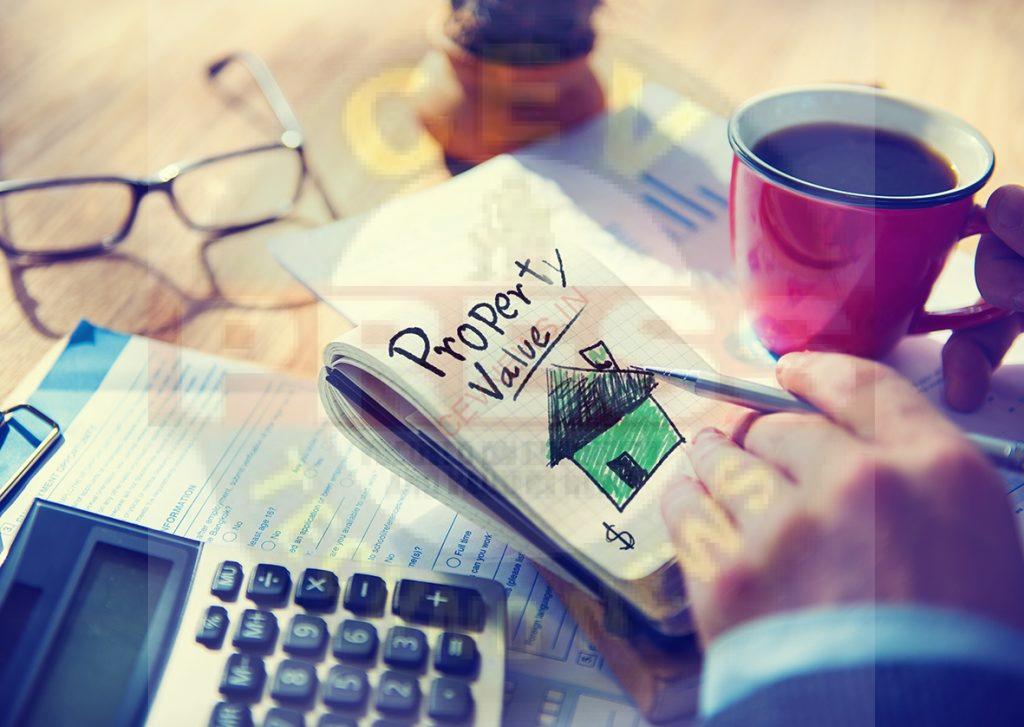VALUE INVESTIGATION TECHNIQUES
AUTHOR: Er. ALHAD DESHPANDE
INTRODUCTION;
Friends, We all professionals have to investigate value-oriented aspects of the property to be valued for various valuation purposes. For that, most of us conduct inquiries from various available reliable sources like the information available from govt. offices like ready reckoner or circle rates registered sale instances of similar property in the surrounding area of similar nature or magnitude, and inquiries from people related to real estate like builders, brokers, commission agents, civil contractors, etc., to arrive at the most probable and nearest market value of the property.
We have to conduct all this exercise within the stipulated time allotted by bankers, maybe 2-3 days or more in exceptional cases. Not only fresh valuers but also experienced valuers many times are in dilemma, about how and in what way the investigation has to be done so that they have peace of mind while delivering professional output.
In this article, I am going to focus on the best techniques, and methodology applied to achieve the such goal!
The investigation process is split into the following parameters …
[A] Understanding what is to be valued and its purpose!
This is more or less like KYC [know your customer] done by a bank, here we can say
[KYP- KNOW YOUR PROPERTY], KYP is carried out after going through the title deed, and question-answer sessions with clients or property owner’s representatives.
While conducting inquiries related to property, the same questions can be asked in different ways to different people, to know facts related to such property like any unfortunate incident that happened in past, its impact on the value of the property, the latest provisions in city development plan in and around said property, restricts on its use partially or fully if any, any reservation etc. THE INVESTIGATION PROCESS MUST BE CONDUCTED IN GOOD FAITH AS PER THE PURPOSE OF VALUATION!

[B] Collecting all possible documents related to the property to be valued like sale deed, lease deed, and non-agriculture order from Hon. Collector, building permission /completion with plan approval from local competent authority, deed of declaration, title investigation report and many more.
By going through all such documents, we start to extract some probable picture in our mind of the property to be valued.
[C] Site visit – This is the most important aspect of the process and has to be done skillfully. The valuer has to tally the documented details/aspects of the property on the field, any ambiguity has to be properly noted and reported. For eg. If the Approach way to the said property shown on the document is to say 40 feet and at site, there is an encroachment from other residents in the said locality, because of which the actual approach road appears to be 25 feet or 30 feet instead of 40 feet.
It is always beneficial to start our property reading from the source like when agri. The land was converted to non-agri. Land, when town planning dept. has sanctioned layout of plots therein, what is mentioned in the layout, whether plot details, demarcation, and boundaries mentioned in the layout plan, and building approval plan are the same or different? many times it is observed that such details do not tally on the field.
In such cases, it is always beneficial to adopt a policy of “whichever is less” in social interest, because if we adopt a “whichever is higher” policy, the results are going to vary and the same may lead to wrong analysis and end result!
In short, the basic and only purpose of the site visit is to cross-check whether the property shown on documents is the same as on the field and its location, the extent is physically verified.
Many valuers and bankers are under the impression that the existence of the property on the field is only verified by its four boundaries on north, south, east, and west. But friends, the same is not 100 % true, boundaries come under the information part of the property and not the legal framework. In many metro cities like Pune, flat/shop boundaries are not separately mentioned, the overall project boundaries are only mentioned, does it mean that property cannot be identified?.. The answer is no because the valuer can mention the boundaries of such flat/shop separately, taken from the building approval plan, tallied with its actual site location!
[d] Analysis of the data collected from documents, govt. and various offices, agencies and fields;
All the data collected from documents, govt. and various offices, agencies, and fields have to arrange properly in order so that process becomes easier for analysis.
The data in raw- form has to be tabulated properly in order and then the value search starts!
Transactions in the same area /locality of similar property have to be tabulated in order of preference, a few transactions on the lower side and a few on the higher side are taken for reference and studied thoroughly. Many times, people show lower consideration on sale deeds to take advantage of the lowest possible stamp duty and registration expenses or sometimes people show higher value to take benefit of maximum loans on such property from financial institutions. So each and every transaction has to be properly studied and tallied with market inquiries conducted with senior citizens, well-known people, and real estate agents.
Sometimes properties come in influence areas like near some metro city, near some highway, or a proposed market committee, which is having an impact on its value. There might be a land acquisition process carried out in the nearby area recently, and the compensation being paid for such lands had an impact too on the value of the asset to be valued, all such factors must be taken with due care.
The appropriate approach to such valuation can be selected from cost, market, and income approaches, depending on type and class of asset and facts related to it, the total weightage score analysis can be an effective tool using statistics and mathematics, by calculating the score of comparable assets and comparing the same with asset to be valued considering time, age, location, area, specification, environment and so many other factors with social, technical, legal and economic factors.
[e] Result and output;
After the site inspection, data collection, and analyzing the data, the results can be certified based on certain assumptions, and disclaimers. Every possible aspect of the property has been studied and analyzed in the best possible manner.
To practically demonstrate this investigation theory, I will put it with a sample case study in tabular form to understand the important aspects in value investigations
SAMPLE SITE INVESTIGATION/VISIT REPORT;
| S.No. | Question | Answer |
| 1. | Location of Property | Land in gut no. 1201 admeasuring 2 hectares in VILLAGE- UKSAN, TQ-MAVAL, and DIST. -PUNE. [MAHARASHTRA]
[Note-Imaginary address, no relevance with the existence, just to clear the concept of investigation ] |
| 2. | KYP [KNOW YOUR PROPERTY] | sale deeds VERIFIED, latest 7/12 extract, govt. land measurement sheet, certified boundary map from govt. office, inquiries with local well known reliable people, residents of the area, and real estate agents for identification and facts related to the said asset. |
| 3. | Inquiries and facts related to said property | Said property was purchased by MR. X from MR. Y in the year 2014, by paying a consideration of —– !, the consideration shown on paper was quite lesser than the actual deal done by 2-parties as reported by residents, and real estate people, even though no direct evidence is available.
The property is located on Kamshet – Uksan road as direct approach to said land, which is 30 feet wide at present, tar road with patch holes, approximately 7KM. FROM PUNE-MUMBAI HIGHWAY and 40-45 km. from PUNE city and 15 km. from VADGAON MAVAL TAHSIL. The property is located in gut no. 1201, which is having agriculture status at present shown in a faint yellow zone [proposed residential zone] , nearby few row housing schemes, and flat schemes are going on with few bungalows already constructed. Land rates per sqft. In actual sale–purchase practices are quoted as 1000-1500 /sqft. For plots varying from 1500-3000 sqft. As inquired nearby, similar lands in the yellow belt are sold for around 2 cr. /acre, but stamp duty paid as per ready reckoner norms only shows lesser consideration on paper. No reservation, nor any acquisition reported as of the valuation date! The land is acquired by govt. nearby for express highway by paying a consideration of 1cr./acre. A few stressed properties are being auctioned nearby by some financial institutions showing a maximum bid value rate as 1000/sqft. |
| 4. | Future possibilities of said property regarding its highest and best use [HABU] | As said land is located on the developing kamshet- uksan road, in the yellow belt, the same can be developed by non-agri. Conversion into residential and commercial forms, either by plotting schemes layout, petrol pumps, restaurants, educational institutes etc.
The highest and best use will be of course mixed [residential + commercial] ! Considering the hypothetical layout approx.. 30 % of space will be used in the future for roads, open spaces, amenities etc. and the rest 70 % will be under residential and commercial use and will be available for sale |
| 5. | FINDINGS FROM THE SITE VISIT | No discrepancy was observed in documents and its site existence!
The proper approach to the site is established on documents and field! Site measurements and boundaries were tallied, and found correct! NO ENCHROCHMENT IS FOUND! Few row housing schemes and flat schemes are going on with few bungalows already constructed, Land rates per sqft. In actual sale–purchase practices are quoted as 1000-1500 /sqft. For plots varying from 1500-3000 sqft. As inquired nearby |
| 6. | PRIMARY OPINION DERIVED AFTER SITE INVESTIGATION | As inquired nearby, similar lands in the yellow belt are sold for around 2 -3cr. /acre, but stamp duty paid as per ready reckoner norms only shows lesser consideration on paper.
Land rates per sqft. In actual sale–purchase practices are quoted as 1000-1500 /sqft. For plots varying from 1500-3000 sqft. So considering all these aspects land can be valued as 2 hectors [x] 0.7 [30 % deducted for roads, open spaces etc.] [x] 1000/sqft. [as discounted plot rate] [x] 0.85 [15 %less for undeveloped layout]= 12,80,44,000/- |
| 7. | Conclusion ; | The market rate for gross land is 2-3 cr./acre is tallied with the above value assessed and found ok!
Still, for justification few sale instances of open plots, constructed bungalows, and row houses can be taken from the IGR site, to prove the above valuation supported by evidence and its marketability! |
| 8. | Attached herewith | Location /route map to the property inspected/valued
Google location with latitude, longitude Land measurements with a rough sketch |
ABOUT THE AUTHOR

Er. ALHAD DESHPANDE
B.E. [CIVIL], M.I.E., F.I.V., M.O.V.
IBBI REGISTERED VALUER


